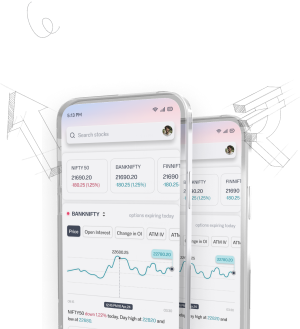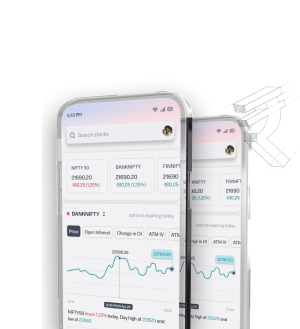Point and Figure Charting: The Price Movement Focused Technique of Charles Dow
Now, we will review another very unique way to follow the price action: Point and Figure Charting. Created by Charles Dow in the late 1800s, this technique represents changes in price with vertical columns of X's and O's. Unlike other charts, Point and Figure charts are simple and draw attention to important support and resistance levels. The article will define how Point and Figure Charting began, its major constituents, strategies, and its limits. This will provide you with insight for improved technical analysis and understanding of market trends.
Main Points
- Point and Figure charts do not consider time; they only regard changes in price.
- Double tops and double bottoms are common signals seen in Point and Figure charts.
- Triple tops and bottoms are more complex in their study, with bigger goals in price.
- Box size and amount of reverse affect chart accuracy.
Using Point and Figure charts with other indicators enhances the trading outcome.
The Origins of Point and Figure Charting
Point and Figure Charting dates back to the late 1800s, a time of great change in trading methods. One such individual who helped with this change was Charles Dow, an important person at Dow Jones & Company. He helped create a new perspective toward market trends through price changes.
It made people realize the price trends at a glance. This new technique was emphasized as simple and clear in making charts.
Historical Overview and Development
Point and Figure Charting began by closely examining how stock prices move. It was first used more than a hundred years ago. Traders preferred it because it did not pay attention to the daily fluctuations.
In 1933, the system was improved by Victor deVilliers. He wrote his ideas into a book that really helped traders understand how prices move. Since then, charting techniques have developed a lot and have started to help traders in making better decisions.
Charles Dow's Contribution
Charles Dow was a strong influence on Point and Figure Charting. One of his objectives was to make the trend so apparent that buying and selling decisions became easier to make. It would not require much distraction, other than changes in price.
These complicated the pattern and helped to understand how exactly supply and demand impact prices.
Charting Methods and their Development
Point and Figure charting evolved with time to fit what the trader needed. The advent of automation in the 1980s only pushed its popularity further. Today, there are different types of charts to choose from.
Point and Figure charts are good for the long-term investor. They show the big trends without getting one bogged down in the minutiae of price changes.
Mastering the Basics of Point and Figure Charting
Point and Figure Charts are special study tools of the marketplace. Because it removes time, one is able to easily pick out trends and trading opportunities associated with price changes.
How Point and Figure Charts Work
Point and Figure Charts are simplified, purely price-change charts. A column of X's indicates a price advance; an O column indicates a decline. The simplicity of the system makes many important trend changes easy to spot. These depict important levels of resistance and support using horizontal lines. This enables traders to very easily view how the trend moves.
The Role of X's and O's in Showing Price Movement
These charts are based on X's and O's, crucial with each change in price. A rule, typically a size box three times over, means a sharp price change in the other direction. This way, important trends are clear to traders. Using these symbols, traders are able to monitor major changes in the market. In a way, this helps to plan further steps.
The Major Components of Point and Figure Charts
Point and Figure Charting is a unique method for the market user. It is based on two main parts: box size and reversal amount. These parts help us realize the market in detail.
Box Size and Why It Matters
Box size determines how much the price must change to display a new X or O. For prices less than 0.25, a small box size of 0.0625 is good for quick trades. For higher prices, the box size can be larger, up to 500 for those assets that cost over 25,000.
Choosing the right box size would allow easy detection of any price change; therefore, better analysis could be conducted and superior decisions made.
Reversal Amount and How It Impacts Charting
The reversal amount is the number of boxes needed to turn around before starting a new column. It is usually three times the size of the box. We can adjust this according to our trading plan.
One can be sure that a larger reversal amount would reduce false signals and then make real trends easy to recognize. However, this should be looked at carefully. Big changes may mean big losses. Knowledge of box size and the amount of reversal is essential for working or deriving value from Point and Figure Charting. It enables us to analyze the market.
| Price Range | Box Size | Reversal Amount |
|---|---|---|
| Under 0.25 | 0.0625 | 0.1875 (3 × box size) |
| 0.25 - 1.00 | 0.125 | 0.375 |
| 1.00 - 5.00 | 0.25 | 0.75 |
| 5.00 – 10.00 | 0.5 | 1.5 |
| 10.00 - 25.00 | 1.0 | 3.0 |
| 25.00 and more | 500 | 1500 |
Find Chart Patterns in This Point and Figure Charting
Point and Figure charting identifies important patterns. These patterns act as a kind of trade signal in pursuing a wise course of action. It shows the double tops and double bottoms that form crucial aspects concerning the market movement.
Double Tops and Double Bottoms
Double tops show a sign of a market going down. They occur when a column of X's reaches a high point and then drops. We may sell when a new column of X's does not go higher than that high point. Double bottoms, however, show a sign of a market going up. They happen when a column of O's goes down and then goes back up to a previous low, which tells us to buy.
Triple Tops and Triple Bottoms
Triple tops and bottoms give us more information in our analysis. They appear after several price changes, showing clear signs of reversals. Triple tops mean there are three peaks one after another, indicating a drop. Triple bottoms mean there are three lows one after another, suggesting a rise. Finding these patterns helps us predict big market changes.
Other Important Patterns
Moreover, there are more patterns in Point and Figure charting besides doubles and triples. Bullish and bearish catapults show big changes in the market: bullish catapults' suggested a price goes up past a line, while bearish catapults suggested a price may go down. Recognizing these patterns helps us discover the most important trading signals in a trading plan.
| Pattern Type | Description | Trading Signal |
|---|---|---|
| Double Top | Price peaks at around the same level | Possible selling signal |
| Double Bottom | Formation of two troughs about the same level | Buy opportunity |
| Triple Top | Three peaks formation | Indicates a potential downtrend |
| Triple Bottom | Formation of three troughs | Indicates possible uptrend |
| Bullish Catapult | Breakout over a line of resistance | Shows bullish momentum |
| Bearish Catapult | A considerable price drop after reaching the apex | Indicates bear |
Learning these chart patterns makes us trade better. Locating double tops, bottoms, among others, enables us to understand clearly the changes within the market.
Point and Figure Charting: A Trend Analysis Tool
Point and Figure charting is a good tool for looking at trends. It's very important to know how to find support and resistance levels. This helps traders make wise decisions. Point and Figure charts show where prices face buying or selling pressure.
How to Identify Support and Resistance
Support levels are shown as X columns on Point and Figure charts. With a specific price, it means that the buyers are aggressive since it is a stable place. Whereas, the O columns are showing resistance levels. In that place, the occurrences of selling are recorded. Levels of these two need to be known for trading plans.
Making it More Understandable Using Trend Lines
Trend lines on Point and Figure charts allow for trend analysis. These 45-degree angled lines tell us about market trend. Joining peaks of the column of X's or troughs of the column of O's gives us information about market trends.
Key support and resistance levels are found by observing the main trend line. This helps us see the overall situation of the market.
The Point and Figure charting defines, in great details, the complicated market movements showing patterns and trends very clearly. This helps in making better trading choices by finding important levels and using trend lines for more insights.
How to Use Point and Figure Charts
We could make Point and Figure Charting work effectively with clear plans. Using the breakout strategies will earn one more profit. This means we start trades or get into it from the price going above key support or resistance. And therefore, we make more money by applying this line of approach in a fast market.
Make More Money with Breakout Strategies
Breakout strategies literally mean looking for important price points, like when a stock goes above support or below resistance levels. Trading at these moments allows us to take advantage of big market changes. Point and Figure charts help us to strip away some noise and put a focus on important changes. This is what improves our trading.
Reversal and Continuation Patterns
This gives more opportunities for earning profits: other reversal patterns are double tops and bottoms. All these help us to project the time for the reversal of the trend, so we are in a better position. Continuation patterns allow us to stay continuously in the trend after a short break, leading again to more profit. All these work well with point and figure charts and therefore become very useful tools in trading.
| Trading Strategy | Description |
|---|---|
| Breakout Strategy | Enter trades when prices breach significant support or resistance levels. |
| Reversal Patterns | Identify patterns like double tops and bottoms to anticipate market shifts. |
| Continuation Patterns | Recognize patterns to remain in current movements post-consolidation. |
| Indicator Integration | Use Bollinger Bands, Relative Strength, and On-Balance Volume. |
Market Trend Analysis Using Point and Figure Charts
Point and figure charting is great for spotting market trends. It gives clear insights that regular charts do not show. It looks at price changes and ignores distractions that permit a focus on what really matters in the market.
Eliminating Noise to Focus on Significant Movements
Point and Figure charts are excellent at removing the noise. They present to us big price changes, not small ones. This works to a trader's advantage in identifying important signals.
There is a buy signal when a column of Xs is above the previous column. There is a sell signal when a column of Os is below the previous column.
Using Other Technical Analysis Tools in Conjunction
Using Point and Figure charts with other tools helps us understand the market better. We can draw lines from important high points and low points to see trends clearly. Groups of these lines show strong support or resistance.
Employing these tools jointly gives us in-depth knowledge of market changes, which helps us make better and more profitable trading decisions.
Limitations of Point and Figure Charting
Point and Figure Charting is a helpful tool in technical analysis. However, it has some limits that traders need to understand. Knowing these limits helps us use this method carefully in our trading plans.
Overview of Disadvantages and Enjoyable Pitfalls
One major shortcoming of Point and Figure Charting is that it neglects time with regard to the analysis of price movements. This may pose complications, particularly with markets that are rapidly changing. Reliance on Point and Figure patterns alone might lead to erroneous trading signals. This may cause traders to be confused when making decisions.
It is important to understand that Point and Figure charts are great at filtering out market noise. However, they might still miss crucial information which affects trading opportunities.
Complementing with Other Indicators
Charting with other indicators for point and figure adds to the improvement of chart analysis. Some problems mentioned get solved by incorporating other methods. For instance, in the use of bar charts or candlestick charts, more on price movement is provided.
These formats are showing open, high, low, and close prices. Also, checking for volume spikes or looking at moving averages can discern trends and reversals that Point and Figure may miss. This combination makes better trading strategies work better so that one can make better trades.
| Chart Type | Limitations | Advantages |
|---|---|---|
| Point and Figure | No time consideration; can miss rapid price changes | Filters noise; visualizes significant price movements |
| Bar Chart | Hard to read by new users, might mix rising and falling bars | Gives comprehensive information about price movements |
| Candle Stick Chart | Requires deeper understanding to implement it well | It shows price movements; it shows market moods |
Conclusion
The Point and Figure Charting technique present a very simple way to see the market. It looks at price changes; it does not look at time. This is useful for individuals who need simple and clear ways of investing. We have examined key elements like X's and O's, chart patterns, and how changes in columns indicate trend changes. Point and Figure Charting helps us better understand market trends. This helps us create effective trading strategies. Point and Figure Charting offer a different view, which supports a better way of trading. It tends to make us more confident and successful in the market.
FAQ
What is point and figure charting?
Point and Figure Charting: An alternative view of the changes in price, as opposed to time. It represents rising prices in X's, and falling prices with O's. This allows traders to see key levels without getting sidetracked by a myriad of market details.
Who developed Point and Figure Charting?
Charles Dow, in co-founding Dow Jones & Company, created it in fact in the late 19th century; Victor deVilliers later made improvements to it in his subsequent book of 1933, "The Point & Figure Method of Anticipating Stock Price Movements."
How do you read Point and Figure Charts?
These charts depict Xs for rises in price, and Os for falls in price. Traders look for patterns like double tops and bottoms. This helps them make trading decisions based on price, not time.
What are the important components of Point and Figure Charting?
Important ones include box size that decides how much the price moves for an X or O, and reversal amount that changes direction on the chart. Choosing the right setting is important for successful trading.
Which of these trading techniques could be used with Point and Figure Charting?
Some of the good strategies to implement include crossover breakout trades, reversal patterns for a change of the market, and continuation patterns for trends. This will help traders take advantage of market moves.
What are the limitations of Point and Figure Charting?
Since time is not measured, it is a drawback in fast markets, and in most cases, using only Point and Figure can often give the wrong signals. It's better to use it with other tools.
In what way does Point and Figure Charting help in Market Research?
It filters the noise widely and focuses on large price changes. In combination with other tools, traders can further refine their strategies and understanding of the market.
Disclaimer
The content provided is for educational purposes only and does not constitute financial advice. For full details, refer to the disclaimer document.




